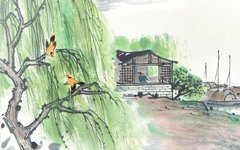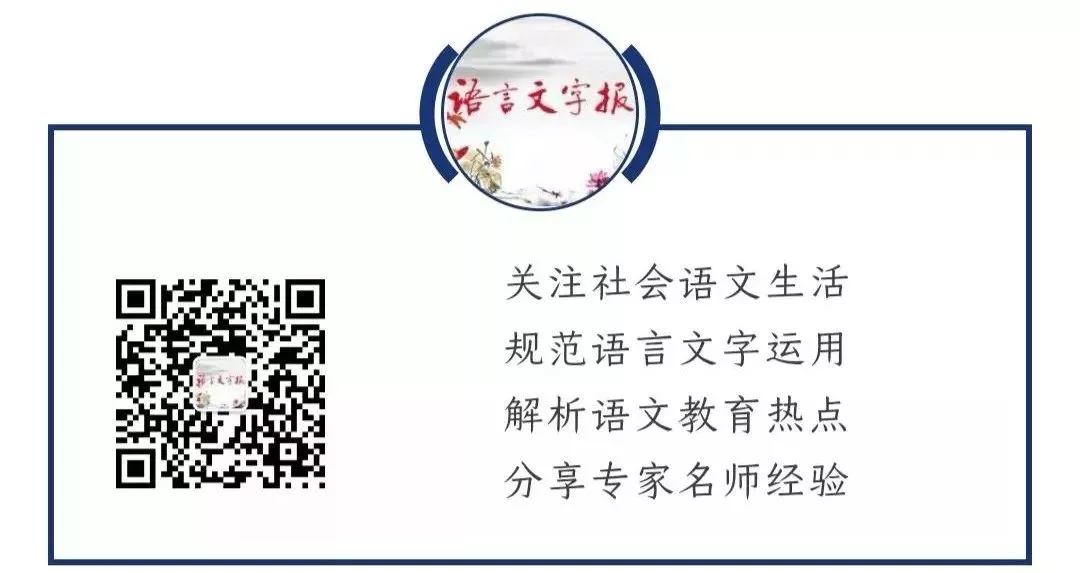
Author’s Note
In the “Book of Songs: Picking Vetch”, it states, “In the past, I went, the willows swayed; now I think, the rain and snow fall thickly.” This juxtaposition of two starkly different scenes reflects the physical and mental pain of a traveler over many years, creating an artistic effect that is simple in words but profound in meaning.This creative technique of the interplay between reality and illusion has been refined by poets over generations, continuously enriching and developing, becoming an important creative method and fundamental aesthetic principle in classical Chinese poetry.The selected text from the compulsory high school Chinese textbook includes the Song Dynasty poet Liu Yong’s “Wang Hai Chao (Southeast Scenic Beauty)”. This article interprets this poem from the perspective of the interplay between reality and illusion.
Realistic Depiction, Enhancing Urban Splendor
In poetry, “reality” refers to the actual objects, scenes, and environments depicted by the author in the objective world, that is, the scenes before one’s eyes, the observable scenery. In the technique of the interplay between reality and illusion, reality serves as the premise and foundation for illusion. Illusion cannot arise from nothing; it must rely on reality as its support, starting from the real. Readers enter the poetic realm through the author’s descriptions of flowers, birds, insects, and fish, as well as flying creatures and beasts, truly perceiving the unique world shaped within the work.
The poem “Wang Hai Chao (Southeast Scenic Beauty)” is rich in language and has a beautiful rhythm. Liu Yong employs a large number of realistic descriptions to vividly portray the splendor of urban scenes. The poem opens with, “Southeast scenic beauty, the three Wu cities, Qiantang has been prosperous since ancient times,” presenting a panoramic view of Hangzhou, a city with a superior geographical location and a long history; next, it focuses in detail, vividly depicting three lively scenes.
The first is a cityscape—”Smoky willows paint bridges, wind curtains and green drapes, a myriad of households.” First, the graceful willows and the beautifully adorned bridges highlight the comfort and beauty of the living environment; then, with the word “wind”, the entire picture becomes lively, as the gentle breeze lifts the curtains and green drapes that cover the doors and windows, creating an elegant atmosphere of Song Dynasty residences; finally, the mention of the multitude of households gives a grand visual impression.
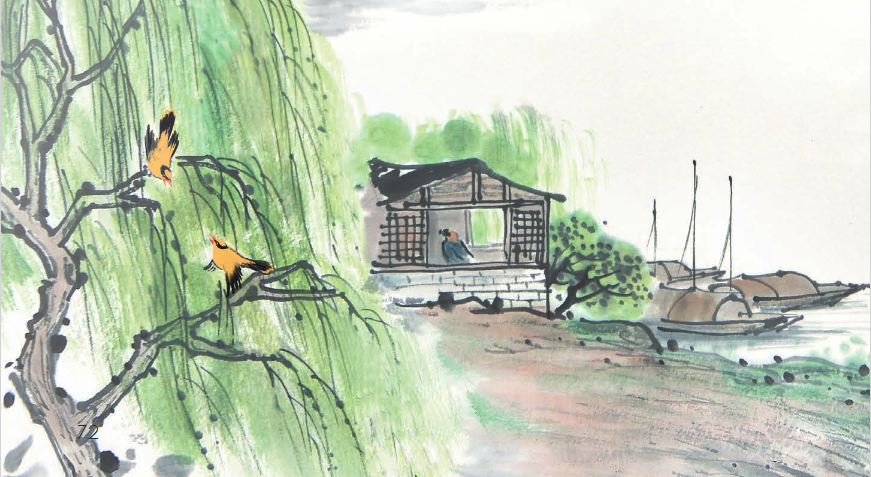
The second is a depiction of the Qiantang River—”Cloud trees surround the sandy banks, raging waves roll like frost and snow, the sky’s chasm is boundless.” The use of personification in words like “raging” and “rolling” describes the surging and frothy waves of the Qiantang River, both bold and realistic, giving a strong sense of impact.
The third is a bustling market scene—”Markets lined with pearls and jades, households filled with brocades, competing in luxury.” The words “lined”, “filled”, and “competing” showcase the dazzling array of goods and the residents’ splendid attire, creating a lively and colorful atmosphere. Three sentences, three scenes, the poet uses realistic brushstrokes to vividly present the wealth and splendor of Hangzhou, making one feel as if they are there, hearing its sounds, and seeing its “beauty”.
Illusory Scenes Supplement, Expanding Imagery Space
In poetry, “illusion” refers to the intangible objects, scenes, and environments derived from the author’s thoughts, associations, or imaginations, which cannot be seen or touched, but can only be appreciated through the lines. Through the use of illusion, the content of the poetry is not limited to the time and place, allowing the poet to connect with distant times and places, greatly expanding the imagery space and forming a more complex artistic conception.
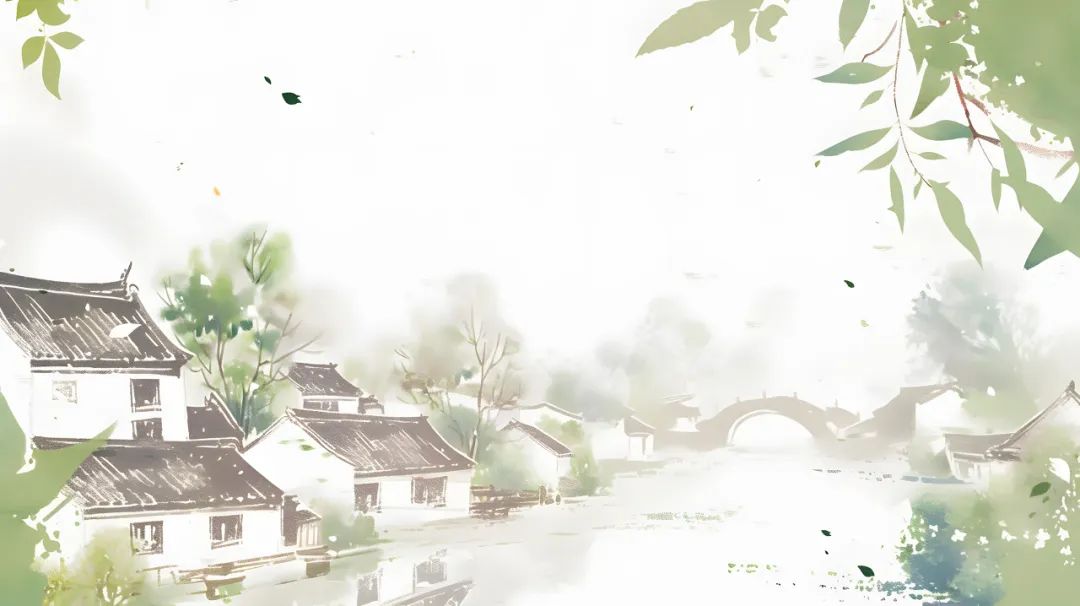 In the second half of “Wang Hai Chao (Southeast Scenic Beauty)”, realistic scenes lay the groundwork, while illusory scenes supplement, depicting Hangzhou’s beautiful scenery from multiple angles.“Layered lakes and peaks are clear and beautiful” showcases the beauty of the lakes and mountains. “There are autumn osmanthus flowers, ten miles of lotus flowers” breaks the boundaries of time, placing the fragrant osmanthus of autumn and the blooming lotus of summer together, creating a vivid interplay of reality and illusion, fully engaging the reader’s sense of smell and sight. “Qiang pipes play in the clear, and the songs of the water lilies float at night, the happy fishermen and lotus children” realistically depicts the entertainment life of Hangzhou’s common people, filled with joy. “Riding in intoxication, listening to flutes and drums, enjoying the misty clouds” incorporates the poet’s imagination, shaping a character who listens to elegant music, appreciates beautiful scenery, and possesses refined interests (some say this refers to local officials). Through the combination of reality and illusion, Liu Yong writes about a charming Hangzhou city where the government is harmonious and the people are happy, reminiscent of the ideal society described in the Analects by Zengzi—”In late spring, when spring clothing is complete, five or six men wear caps, and six or seven boys bathe in the Yi River, enjoying the wind and dancing, singing as they return.”
In the second half of “Wang Hai Chao (Southeast Scenic Beauty)”, realistic scenes lay the groundwork, while illusory scenes supplement, depicting Hangzhou’s beautiful scenery from multiple angles.“Layered lakes and peaks are clear and beautiful” showcases the beauty of the lakes and mountains. “There are autumn osmanthus flowers, ten miles of lotus flowers” breaks the boundaries of time, placing the fragrant osmanthus of autumn and the blooming lotus of summer together, creating a vivid interplay of reality and illusion, fully engaging the reader’s sense of smell and sight. “Qiang pipes play in the clear, and the songs of the water lilies float at night, the happy fishermen and lotus children” realistically depicts the entertainment life of Hangzhou’s common people, filled with joy. “Riding in intoxication, listening to flutes and drums, enjoying the misty clouds” incorporates the poet’s imagination, shaping a character who listens to elegant music, appreciates beautiful scenery, and possesses refined interests (some say this refers to local officials). Through the combination of reality and illusion, Liu Yong writes about a charming Hangzhou city where the government is harmonious and the people are happy, reminiscent of the ideal society described in the Analects by Zengzi—”In late spring, when spring clothing is complete, five or six men wear caps, and six or seven boys bathe in the Yi River, enjoying the wind and dancing, singing as they return.”
Emotion Conveyed through Reality and Illusion, Clarifying the Writing Intent
The Qing Dynasty poet critic Ye Xie said in “Original Poetry”: “The essence of poetry lies in its boundless implications.” Ancient creators emphasized the beauty of subtlety. The technique of combining reality and illusion allows the author’s inner emotions and desires to be subtly expressed through the objects and imaginations in the poetry, making emotional expression implicit and profound.
According to scholars, “Wang Hai Chao (Southeast Scenic Beauty)” is a poem of homage. At that time, Liu Yong passed through Hangzhou and wished to meet the then Transport Commissioner of the Two Zhejiang Provinces, Sun He, but due to strict gatekeeping, he could not meet him. Thus, he wrote this poem as a gift, hoping to receive support and promotion from the other party. In this poem, Liu Yong layers the interplay of reality and illusion to vividly showcase the wealth and beauty of Hangzhou, shaping an ideal society where the people are virtuous and the world is benevolent.
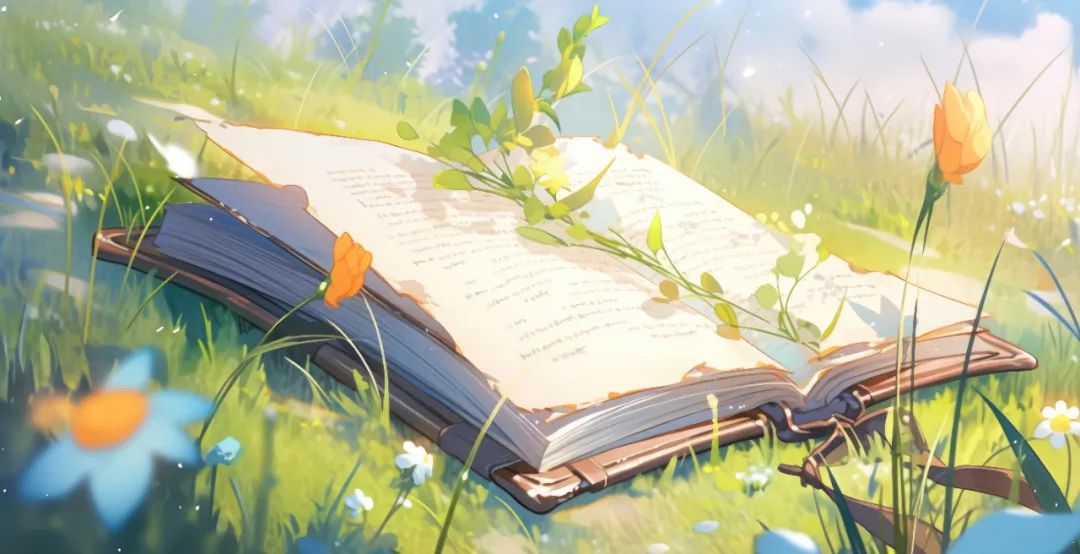
At the conclusion, it is natural to clarify the writing purpose. However, expressing one’s thoughts directly may seem abrupt. The poet expresses a beautiful vision for the future through the line, “In the future, I will depict the good scenery, returning to boast at Fengchi,” wishing for Sun He’s early promotion while subtly expressing his desire for support and assistance. The intention of the gift is thus made clear. According to records in “Ancient and Modern Poetry Talks”, after Liu Yong completed this poem, he asked the famous courtesan Chuchu to sing it to Sun He. On the Mid-Autumn Festival night banquet, Chuchu sang it beautifully, and the next day, Sun He invited Liu Yong into his residence. This shows that “Wang Hai Chao (Southeast Scenic Beauty)” is a successful homage poem.
The Qing scholar Tang Biao said in “Reading and Writing Guide”: “An article must have reality to elucidate its principles, and must have illusion to sway emotions; thus, reality and illusion should complement each other.”In poetry creation, reality allows one to observe the world, while illusion enables one to connect with distant times. The interplay of reality and illusion enriches the connotation of poetry, deepens emotional expression, and creates astonishing artistic realms. Reading classical poetry through the lens of the interplay of reality and illusion is undoubtedly an effective pathway into the world of poetry.
(Adapted from the article “The Interplay of Reality and Illusion in Flourishing Scenes—Reading Liu Yong’s ‘Wang Hai Chao (Southeast Scenic Beauty)'” published on September 4, 2024, in the “Language and Writing Report”; Author: Huang Xianru, Huashiao Middle School, Sihui City, Guangdong Province; Image Source: Tuchong Creative)
(Text Editor: Guo Chao; WeChat Editor: He Qing; Proofreader: Jin Li)


